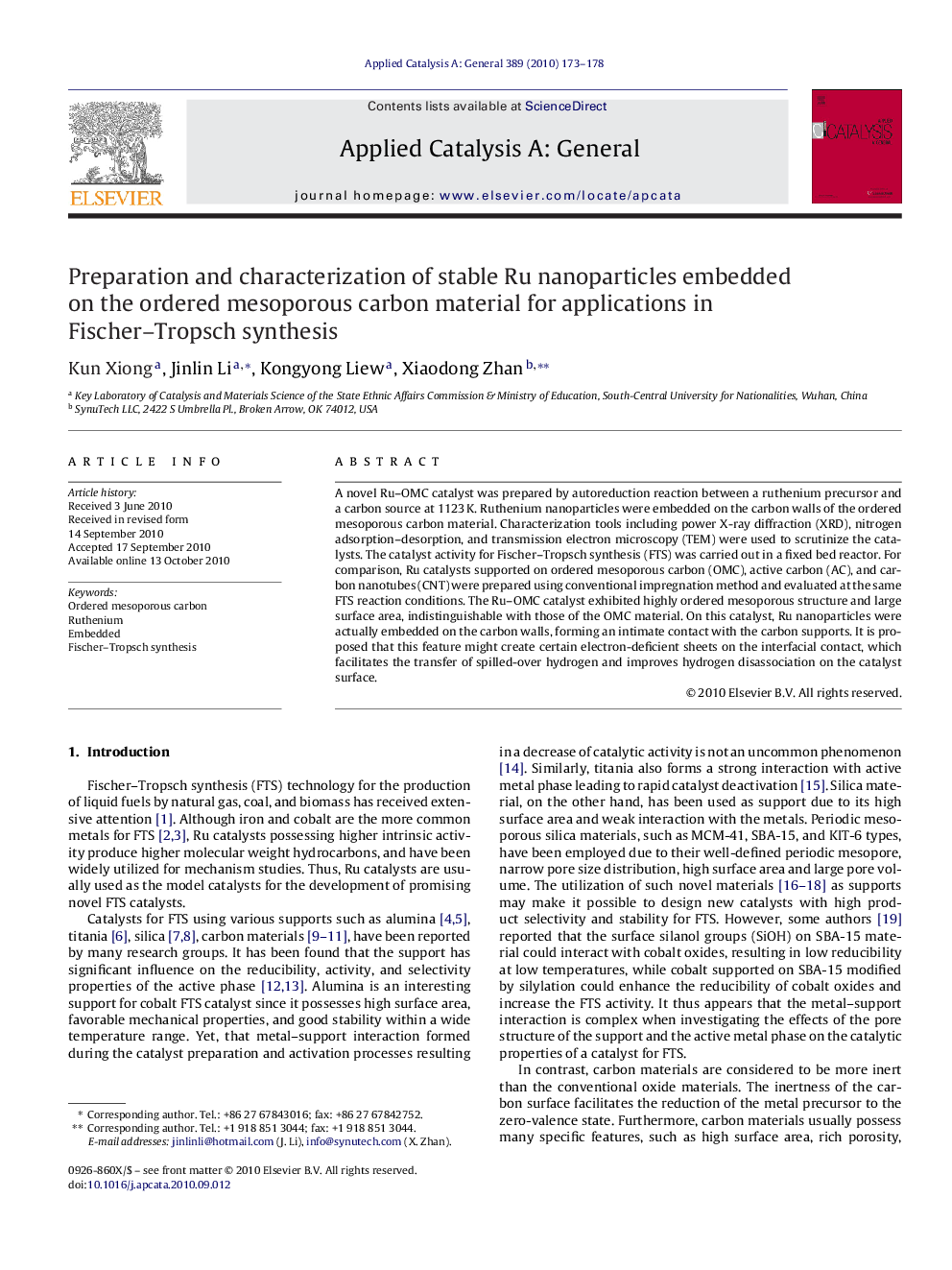| Article ID | Journal | Published Year | Pages | File Type |
|---|---|---|---|---|
| 41894 | Applied Catalysis A: General | 2010 | 6 Pages |
A novel Ru–OMC catalyst was prepared by autoreduction reaction between a ruthenium precursor and a carbon source at 1123 K. Ruthenium nanoparticles were embedded on the carbon walls of the ordered mesoporous carbon material. Characterization tools including power X-ray diffraction (XRD), nitrogen adsorption–desorption, and transmission electron microscopy (TEM) were used to scrutinize the catalysts. The catalyst activity for Fischer–Tropsch synthesis (FTS) was carried out in a fixed bed reactor. For comparison, Ru catalysts supported on ordered mesoporous carbon (OMC), active carbon (AC), and carbon nanotubes (CNT) were prepared using conventional impregnation method and evaluated at the same FTS reaction conditions. The Ru–OMC catalyst exhibited highly ordered mesoporous structure and large surface area, indistinguishable with those of the OMC material. On this catalyst, Ru nanoparticles were actually embedded on the carbon walls, forming an intimate contact with the carbon supports. It is proposed that this feature might create certain electron-deficient sheets on the interfacial contact, which facilitates the transfer of spilled-over hydrogen and improves hydrogen disassociation on the catalyst surface.
Graphical abstractFigure optionsDownload full-size imageDownload high-quality image (112 K)Download as PowerPoint slideResearch highlights▶ A novel Ru–OMC catalyst was prepared by autoreduction reaction. ▶ Ru nanoparticles were embedded on the carbon walls of the ordered mesoporous carbon material. ▶ The Ru–OMC catalyst retained original ordered mesoporous structure. ▶ The Ru–OMC catalyst exhibited superior catalytic activity for Fischer–Tropsch synthesis.
